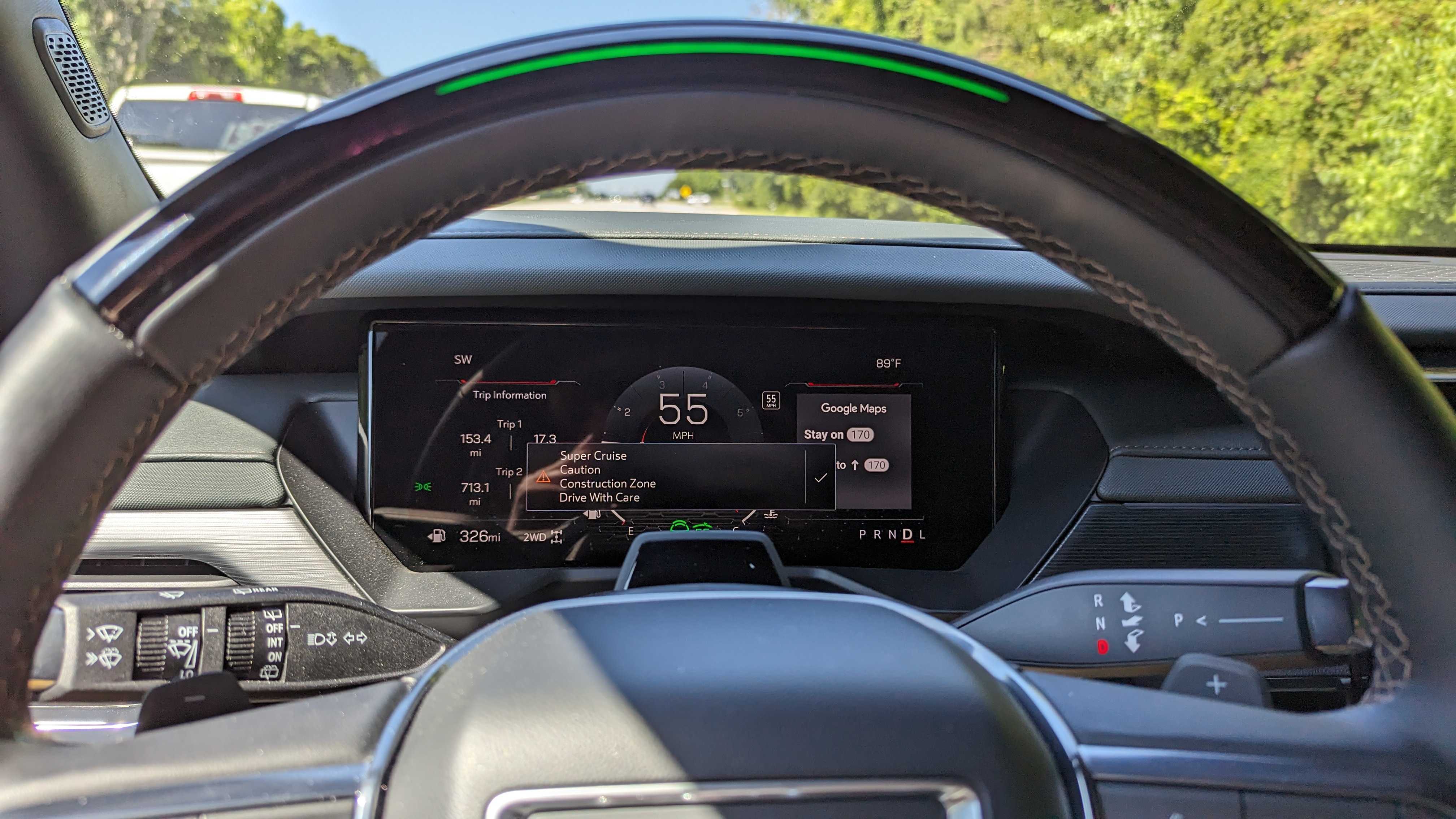
While not fully autonomous, Level 2 self driving is becoming more common with many manufacturers having their own systems. GM is one of those manufacturers, and its “Super Cruise” system claims to be the most extensive one available in the United States at the moment.
Like other Level 2 systems, Super Cruise allows drivers to take their hands off the wheel on designated stretches of road and let the vehicle do its thing. As with other systems, Super Cruise will pop up a notification when you can activate it. When it’s running, the top of your wheel will go green. If you see it flash red, then it’s time to take control of the vehicle.
However, Super Cruise differs from other systems in a number of ways. I recently managed to get hands-on (or hands-off, more specifically) with GM’s system while driving a 2024 GMC Acadia. Here’s what I experienced.
You can use the system in a lot of places

GM claims its self-driving system is the biggest in North America, and that may be due to the fact it works on a good number of single-lane roads. In fact, most of my experience with it was on the kind of backroads many people encounter every day. This is a big bonus, as systems restricted to larger highways and interstates might be a bit of a waste for a good number of drivers.
While the section of South Carolina I was trying it out in may have been curated by GM, it was a press trip after all, I was still surprised at the amount of Super Cruise enabled roads on offer. As for how the system performed, that’s something I’m about to go in-depth on.
It won’t do everything, but it will do more than most
Super Cruise is one of the most hands-off Level 2 systems I’ve encountered. Automatic lane changes are a large part of that. If we’re ranking things by ease of use, then GM is currently top of the pile. Ford’s BlueCruise system will change lanes by itself, but you need to hit an indicator stalk to make that happen. BMW’s system will also change lanes for you and will even suggest when a lane change is a good idea, but you’ll need to look into the relevant side mirror to confirm the action.
With Super Cruise, the vehicle will just change lanes if you’re on a two-or-more lane highway, the vehicle in front of you is moving slower than your set speed, and a lane change is safe. You can just sit back and relax. If you do want to be more involved, you can still demand a lane change by signaling for it. The vehicle will then move over when it is safe to do so.
As with other Level 2 systems, there are some limitations. You need to keep your eyes on the road, and the car will shout at you if you fail to do so. It won’t take the exit ramp for you or make turns, so you’ll have to take control when it’s time to change roads. As with other systems, you’ll need to step in and take control once the vehicle leaves a Super Cruise-enabled area or just doesn’t feel confident it can navigate a situation safely.
You’ll also have to take control when approaching a stop light, though once you have stopped at the light, you can re-engage the system and simply tap the accelerator when you want to get going again. Super Cruise will then continue as normal and get itself back up to speed.
You do still need to pay attention

As with other Level 2 systems, Super Cruise isn’t perfect, and you are still responsible for the vehicle when it’s engaged. So, you do have to pay attention and be ready to step in at any time. If you want to take control, a tap on the brake will turn off Super Cruise, just like it does with regular cruise control.
You can disable automatic lane changes, but keeping the feature enabled may be another reason to pay attention.
Super Cruise can travel at up to 85 mph, and you set a maximum speed the same way you would if you were using standard cruise control. While 85 is fine on a few roads in Texas, it’s likely to get you a hefty speeding ticket should law enforcement spot you at that speed in most of the United States. You could argue that this isn’t too much of a problem with regular cruise control or other Level 2 systems, as your speed is likely to match the person in front of you should you be behind someone. In moderate traffic, you may not be picked out of the crowd and pulled over.
However, with GM Super Cruise, the vehicle will do everything it reasonably can to travel at its top speed. So, as I’m sure GM would suggest, you should probably set it to the speed limit while Level 2 is engaged. Or at least pay extra attention to the roads.
In terms of price, three years of Super Cruise is provided with every Super Cruise enabled vehicle. The tech that makes Super Cruise work is an optional extra on most vehicles, and its price will vary depending on what it’s being fitted to. GM also says a subscription will be required once those three years are up. Current subscription fees are $25 a month or $250 a year, making Super Cruise one of the cheaper subscription-based systems.



